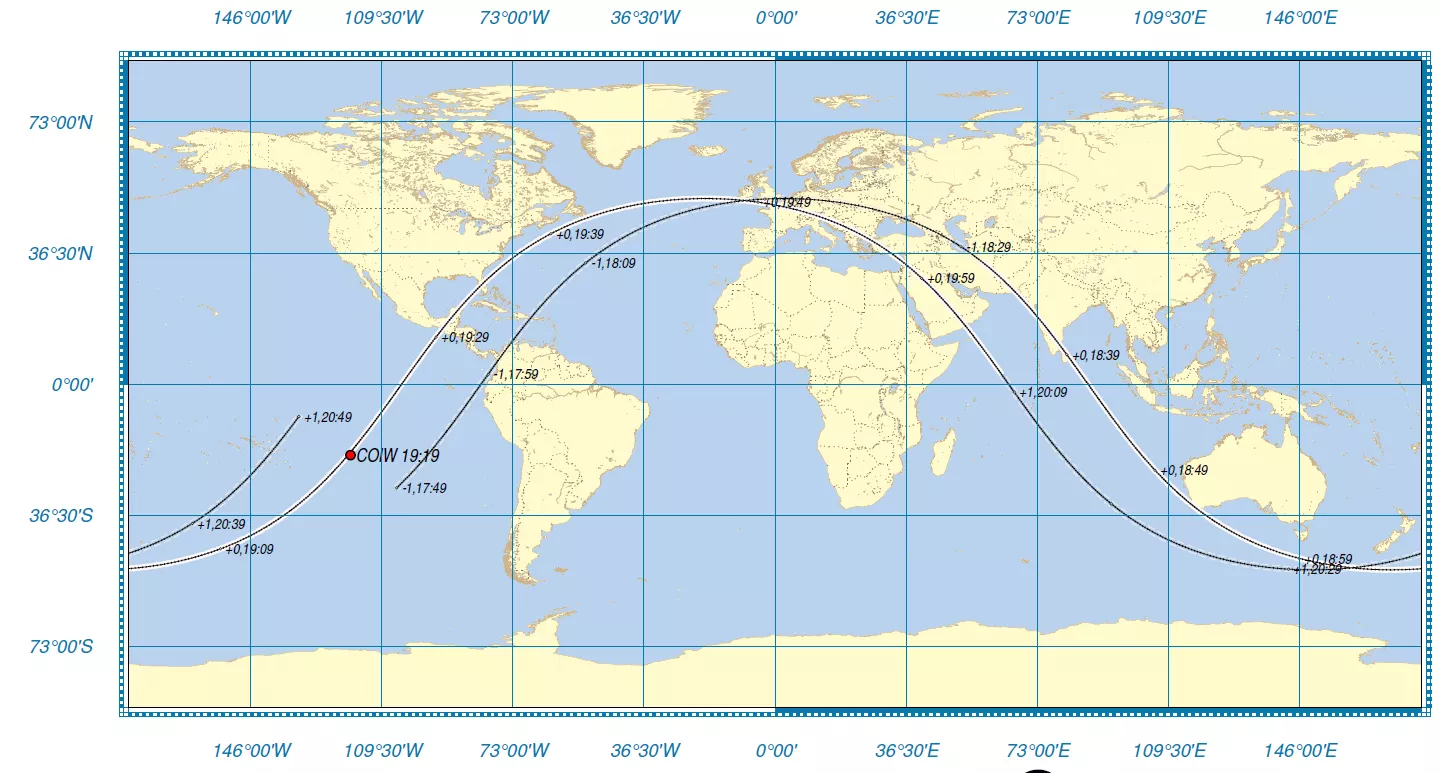What just happened? Space agencies constantly monitor and often direct debris entering the Earth’s atmosphere, usually determining the risk of damage to be minimal. Most material burns up in the atmosphere, and what does reach the surface usually lands in the ocean. However, that wasn’t the case for one Florida resident.
A strange, cylindrical object slammed into the roof of a house in Naples, Florida, last month, tearing through two floors and nearly hitting a person inside. The house’s owner is searching for who is responsible and suspects that the debris came from the international space station.
A March 7 safety bulletin from the European Space Agency (ESA) warned that nine spent batteries from the ISS totaling 2.6 metric tons – over 5,700 pounds – would enter the atmosphere the following day. The junk had circled the Earth since January 2021 in a decaying orbit.

Estimated impact zone (European Space Agency)
Unsurprisingly, most of the estimated path fell over the ocean. However, it also covered parts of Mexico, Florida, Central Europe, and the Middle East. Although the agency predicted that some bits would survive reentry, it still rated the probability of injuries as “very low.”
After multiple revisions, the final estimated impact window was between 18:30 and 20:08 UTC. Astronomer Jonathan McDowell reported a 19:29 UTC impact between the Gulf of Mexico and Cuba. However, Naples resident Alejandro Otero responded to McDowell with photos of a metal cylinder that crashed through his roof and two floors that day. Otero wasn’t home at the time, but his son was.
Hello. Looks like one of those pieces missed Ft Myers and landed in my house in Naples.
Tore through the roof and went thru 2 floors. Almost his my son.
Can you please assist with getting NASA to connect with me? I’ve left messages and emails without a response. pic.twitter.com/Yi29f3EwyV– Alejandro Otero (@Alejandro0tero) March 15, 2024
Fortunately, no one was hurt, but the incident was too close for comfort. Otero’s nest camera recorded the sound of the impact at 19:34 UTC – within the ESA’s window and only five minutes after McDowell’s time. Authorities haven’t confirmed that the object came from the ISS. This incident marks the second time within a few weeks that the ESA reported an uncontrolled re-entry.
In February, officials confirmed the fall of a satellite that had been in a slowly decaying orbit since 2011. Although the risk of damage or injury from space debris isn’t zero, returning it to Earth is safer than leaving it in space, where it could create more space junk and potentially endanger future space travel. Otero thinks space agencies should do more to ensure that debris completely disintegrates in the atmosphere.

